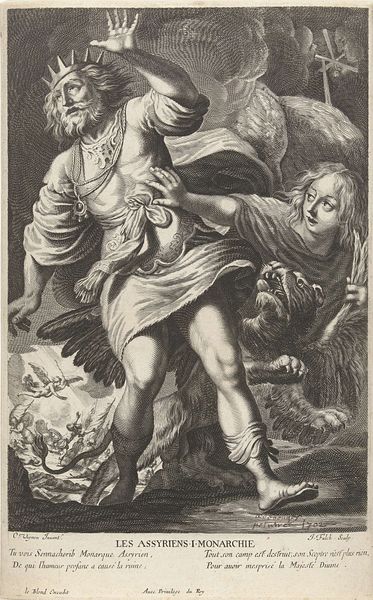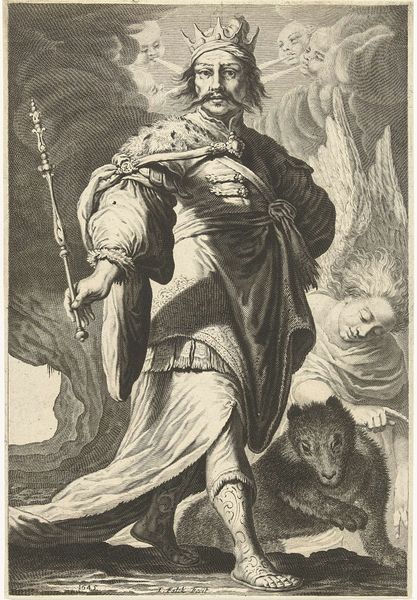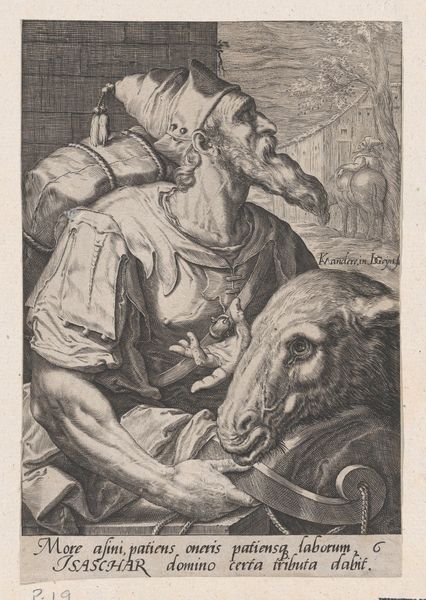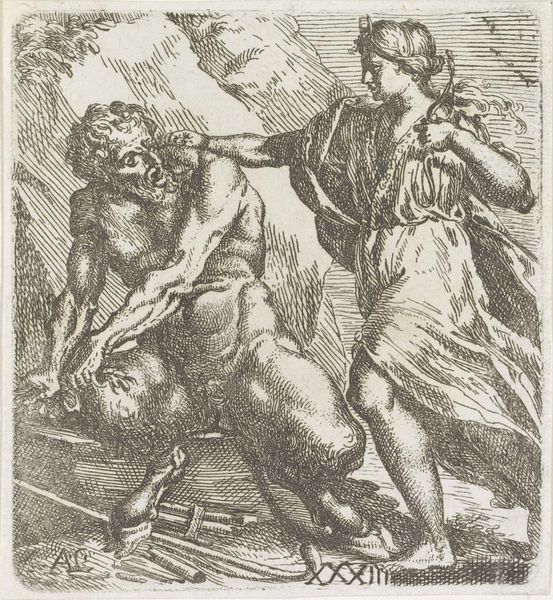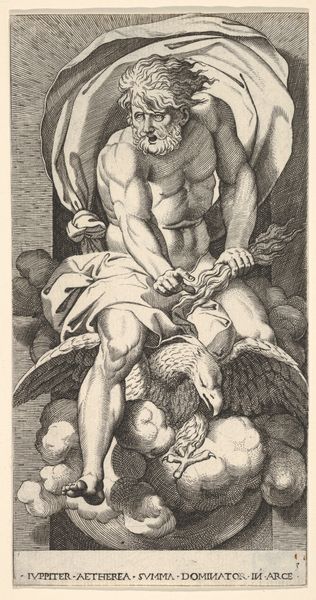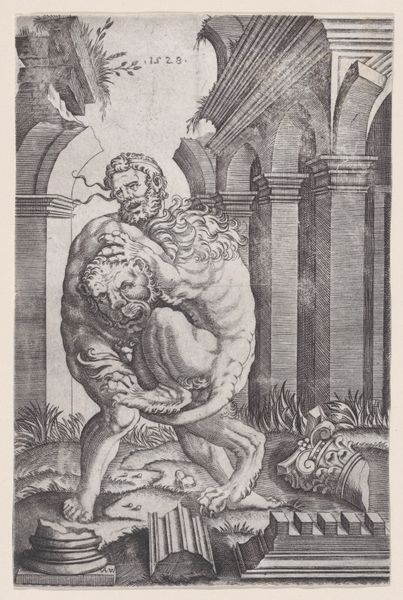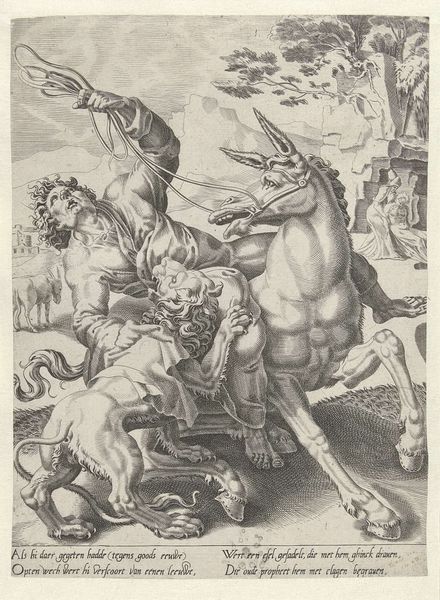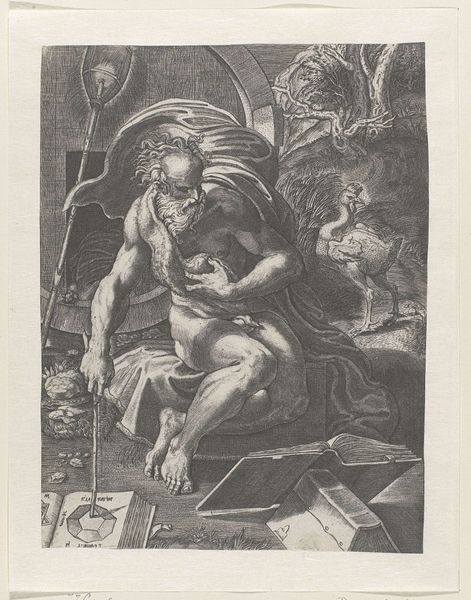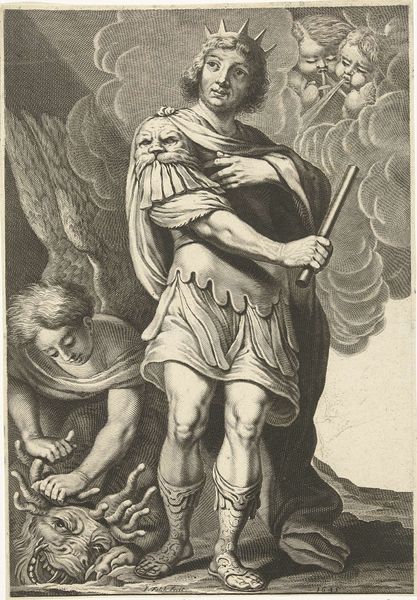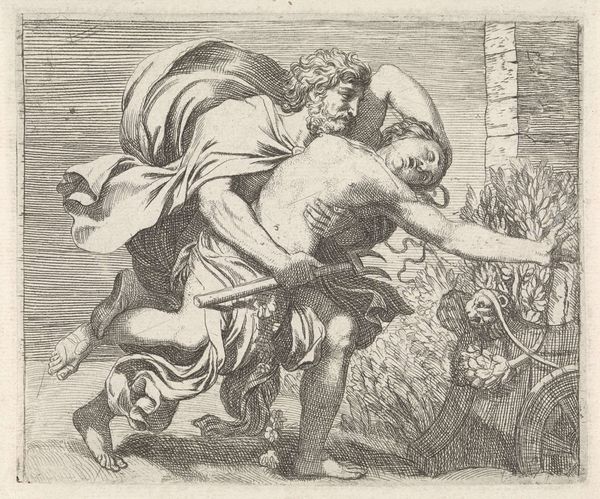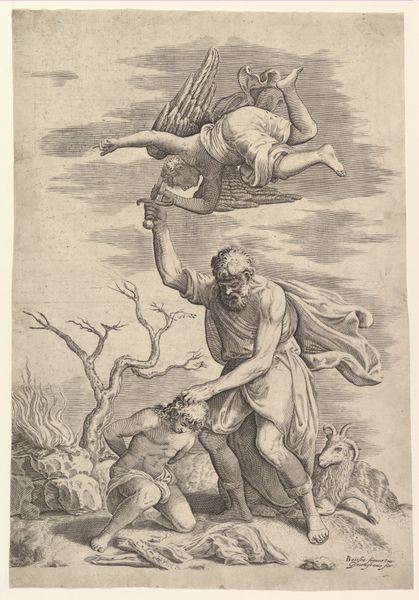
print, engraving
#
portrait
#
narrative-art
#
baroque
# print
#
figuration
#
pencil drawing
#
surrealism
#
portrait drawing
#
history-painting
#
engraving
Dimensions: height 314 mm, width 218 mm
Copyright: Rijks Museum: Open Domain
Curator: This engraving, created in 1645 by Jeremias Falck, depicts the destruction of the Assyrian empire of Sennacherib. It's a striking example of Baroque printmaking, isn't it? Editor: Absolutely, my initial reaction is one of intense drama and almost chaotic movement. There’s a clear sense of impending doom emanating from the central figure and the destruction alluded to in the background. What specific aspects of its making draw your attention? Curator: Well, for me, it's the technique itself. The lines, the density of the hatching—you can almost feel the labor involved in creating this scene. Look closely at how the printmaker modulates the light and shadow just by the sheer physical act of carving these lines into a metal plate and using a press to produce the image. What of the historical context catches your attention? Editor: The narrative—specifically, the fall of empires. We're looking at a visual representation that could be tied to post-colonial interpretations and histories, where power imbalances, cultural erasures, and the cyclical nature of empires rising and falling become clear. How does this print function within broader narratives of identity, conflict, and historical trauma? The print alludes to an old Assyrian power structure; what replaced it and at whose expense? Curator: That’s insightful. Focusing on materials, this image would have circulated widely, democratizing the Biblical narrative and historical themes to a public beyond the wealthy elite. These aren’t unique canvases crafted for a single patron but reproducible images meant to disseminate information widely, serving economic functions through its accessibility, and influencing opinions regarding this Biblical story. Editor: Yes, thinking about dissemination broadens the cultural impact, bringing up issues about social messaging and possibly the artist's position. Do you believe Falck's intent was didactic or merely descriptive? Also, in what ways could contemporary audiences engage with this historical destruction? It also begs questions about the role of artists and intellectuals within broader power systems. Curator: I’m particularly interested in considering the impact of mass-produced imagery on individual and collective consciousness. We could ask about the relationship between craft production, historical storytelling, and the perpetuation of particular values and power structures through accessible artwork. The line quality itself has an almost illustrative function to the biblical narrative; perhaps he saw himself as just the medium through which this was conveyed. Editor: Exactly. And by recognizing such works as reflections of complex political and historical undercurrents, we may uncover rich opportunities to foster dialog that centers overlooked perspectives about the cyclical nature of history. It makes me wonder if this Biblical story was about power structures more than morality; empires eventually decay into their constituent resources. Curator: It certainly seems so! By examining both the physical object and its historical placement, the social and historical factors during its production start coming into focus, which encourages us to appreciate art from fresh, critical perspectives. Editor: Agreed; a material examination allows us to deconstruct how artworks have, throughout time, expressed, questioned, and sometimes perpetuated ideologies embedded deeply within broader societal dialogues. Thank you.
Comments
No comments
Be the first to comment and join the conversation on the ultimate creative platform.
